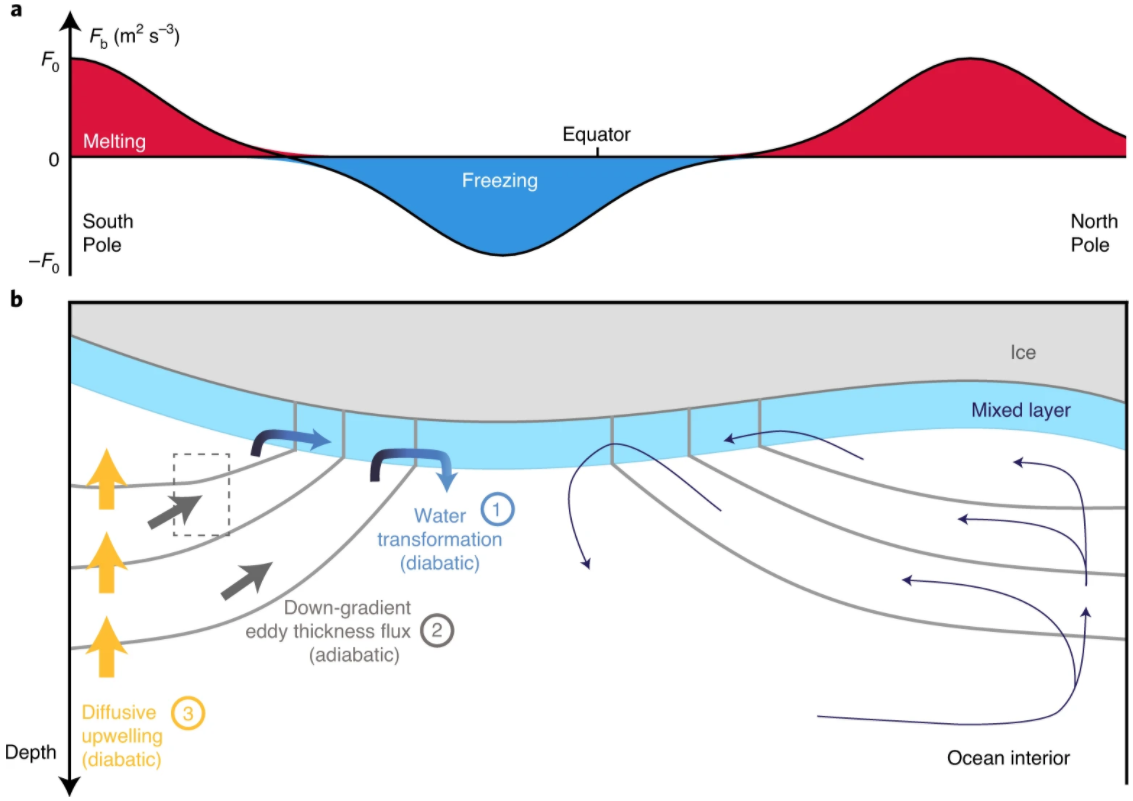Enceladus is a miniature-size Saturn’s moon (Earth’s moon is about 7 times larger) known to have a deep ocean (~ 40km) beneath the thick icy crust (~20km). It has been suggested that Enceladus’s interior ocean is heated from below through hydrothermal activity, powered by tidal dissipation. The ocean should in turn carry the heat to the surface to counter balance the heat loss to the icy crust. The heating from the bottom and the cooling from the surface suggest that the ocean is in motion driven by vertical convection. A new study published in Nature Geoscience noticed a large meridional variation in the ice thickness, ranging from about 35 km in the equatorial regions to less than 5 km in the the south polar region. This suggests that the deep convection may occur predominantly near the equator, while the upward ocean heat flux may occur largely in the polar regions. Therefore, this study proposed a hypothesis that an active meridional ocean circulation (MOC) may exist driven by the deep convection near the equator and the upward ocean heat flux in the polar region. This hypothesis was tested and confirmed by using an idealized, dynamical ocean model forced by an observationally guided density flux at the ocean–ice interface.
Figure 1 from Lobo et al. (2021): a, Inferred surface buoyancy forcing (Fb, m2 s–3, with maximum amplitude F0), based on measured meridional ice thickness gradients (shown in b). b, Schematic of the ocean interior divided into layers of different densities (grey lines). The right side provides a schematic view of the total overturning circulation, while the left illustrates the physical processes that support this circulation. This figure is not drawn to scale. The model assumes zonal symmetry, and simulations described in this work focus only on the southern hemisphere, with a simplified ice gradient and surface buoyancy forcing.
Lobo, A.H., Thompson, A.F., Vance, S.D. et al. A pole-to-equator ocean overturning circulation on Enceladus. Nat. Geosci. 14, 185–189 (2021). https://doi.org/10.1038/s41561-021-00706-3


Leave a comment